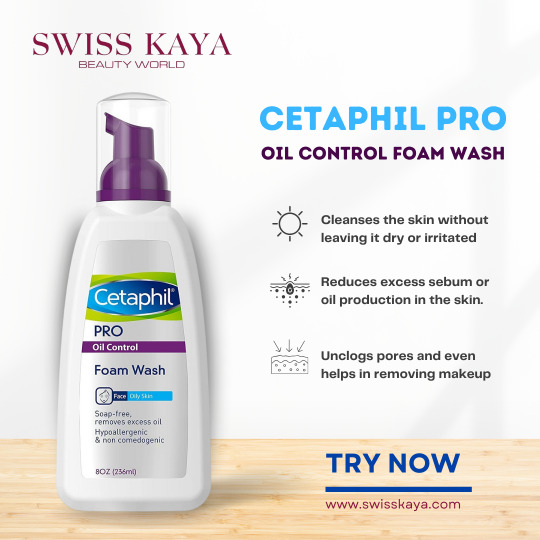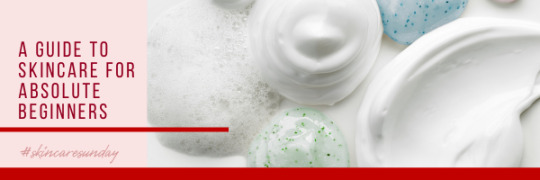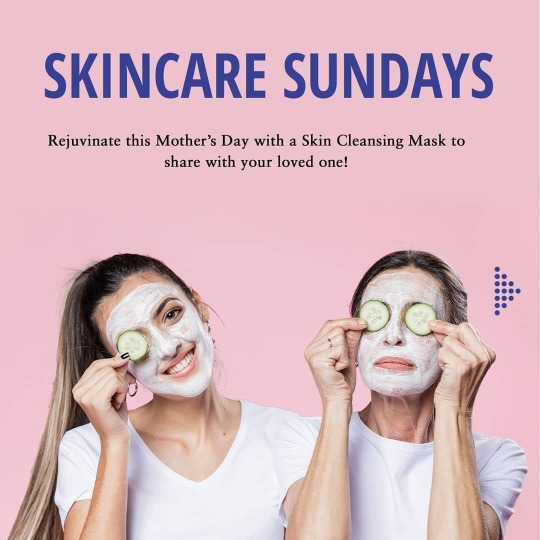#SKINCARESUNDAYS
Text

The perfect recipe to avoid Winter Breakouts
Just mix:
1 tbsp Aloe Gel
2 drops of Tea Tree Oil
2 tbsp Ground Oats
1 tbsp Honey
Apply on the face for 7 minutes and let the magic of Tea Tree work wonders on Winter Breakouts.
Visit www.absolute-aromas.in and get yours today!
0 notes
Text
🌟 Découvrez IMMUNOCAL DERMA No.0007200 🌟 Formulé avec des ingrédients exclusifs pour une peau nourrie, rafraîchissante et éclatante de jeunesse! ✨ Combattez les signes du vieillissement avec ses propriétés antioxydantes. Hypoallergénique, sans parabène et recommandé par les dermatologues. Convient à tous les types de peau 💖
Promotions :
0 notes
Text
#beauty#blogger#lifestyleblogger#beautyblogger#health#skincaresunday#skincareroutine#skincare routine
0 notes
Text

Tired of being held back by shine? Take control with Cetaphil Pro Oil Control Foam Wash! This cleanser banishes excess oil & reveals your natural beauty. ✨ ✨
Buy Now : https://swisskaya.com/shop/skin/cetaphil-pro-oil-control-foam-wash-236ml/
#SkincareGoals #SensitiveSkinApproved #GetThatGlow #ConfidentGlow. #SkincareSunday #ByeByeBreakouts #NoMoreShine #SkincareRoutineMustHave #GetTheLook #OilySkinConcerns & achieving a #BalancedGlow. #PinNowTryLater #TreatYourSkinRight #SkincareForProfessionals #InvestInYourself ✨ #SkincareSquad #YouGlowGirl #Facewash #Foamwash #Cetaphil #Oilcontrolfacewash #swisskaya
0 notes
Text

#SkincareSunday: A total beginner’s guide to skincare
If you’re reading this, you may be feeling a little lost in the terminology and seeming complexity of the world of skincare. Fear not, I’m here to let you in on a secret: it can be as simple or as complicated as you want it to be! I’m going to cover the basic info you need to get started here, but you can always go on to browse my blog or send me a question for any specific clarifications you need.
In this post:
Q&A: the basic information
Actives: an ingredient glossary
Products: building a routine
Tips: from a veteran to a newbie

——— Q&A: the basic information
Q: Does everyone need skincare?
A: Yes, at a very basic level, everyone should take care of their skin to ensure its health, now as well as many years in the future.
Q: What are the non-negotiables in a routine?
A: In the morning, you can do as little as just applying sunscreen. in the evening, cleanse and moisturize. If you don’t want to, you need not complicate it any further.
Q: I hate sunscreen. Do I really need to wear it?
A: Yes.
Q: What if I have specific skin issues I want to fix?
A: Then let me direct you to this post. The first step of skincare is understanding your skin: its levels of oil (whether you are oily, dry or combination) and hydration (whether you are dehydrated), as well as more particular concerns, like hyperpigmentation (dark areas — sometimes called PIH, or post-inflammatory hyperpigmentation as it can happen as a result of wounds and acne), erythema (sometimes PIE — same deal, but with redness and expanded capillaries), rosacea and redness, acne, premature ageing (fine lines and wrinkles, loss of elasticity and plumpness, sun spots, etc.), dullness, rough texture, etc.
Q: I have this specific skin condition (acne/rosacea/eczema/allergies/...), what should I do?
A: Visit a dermatologist and listen to their advice first and foremost, over that of brands, bloggers, influencers, friends and family, well-meaning though they may be.
Q: Who do I listen to in the skincare world? This blogger is telling me to stop washing my face and use only organic coconut oil...
A: Listen to experts: dermatologists, cosmetic scientists and aestheticians, who are educated in the actual facts behind why stuff works, rather than brands, bloggers and influencers who push their financial agendas via fear-mongering.
Q: Are fragrances/alcohol/parabens/silicones/PEG/whatever toxic? How do I avoid chemicals?
A: No, no, no, no, no, and no. Ingredients get demonized by brands who don’t play fair and use fear-mongering to sell their stuff over their competitors’. The ingredients used in cosmetics (speaking from an EU/USA/Japan regulatory perspective) are very closely regulated and monitored for toxicity. Also, everything is a chemical. A chemical-free product is just a vacuum (no air, because that’s chemicals, too).
Q: I am concerned about my wellbeing and the environment. Should I only buy “clean beauty” products?
A: Clean beauty is a huge scam with cult-like overtones. Here’s some info on that.

——— Actives: an ingredient glossary
“Actives” are the ingredients in a formulation that have an active impact in our skin, beyond just moisturizing or providing the structure of the product. Here’s a handful of ingredients that have a lot of scientific evidence behind them, and which you’ll see mentioned a lot. You don’t need any actives in your routine besides UV filters, but the ones below may help you target specific concerns; remember, though, they can sensitize your skin, so less is more. Click the name to see the corresponding tag in my blog.
Retinol: the gold standard molecule for anti-aging and fighting acne. Its derivatives, retinoids, do the same thing at varying strengths.
Vitamin C: ascorbic acid and its derivatives. A great brightening and anti-hyperpigmentation active, also has antioxidant properties and boosts SPF effectiveness.
Niacinamide: anti-hyperpigmentation, fights acne and excess sebum production.
AHAs: alpha-hydroxy acids, the best known chemical exfoliants. These include lactic, glycolic, mandelic, citric, and tartaric acids, among others. They help prevent clogged pores, flaky skin and dullness.
PHAs: poly-hydroxy acids, like lactobionic acid and gluconolactone, which offer gentler exfoliation than AHAs while also helping with hydration.
Salicylic acid: a.k.a. BHA (beta-hydroxy acid), great for dissolving oil-clogged pores and fighting acne.
Azelaic acid: great for those who struggle with redness, hyperpigmentation and acne.
Ceramides: fatty ingredients that mimic the skin’s natural moisturizer; very good at aiding wound healing, and soothing sensitized or dry skin.
Hyaluronic acid: a humectant, that is, a molecule that holds onto water and keeps the top layers of your skin plump and dewy.
Plant extracts: these have a myriad different claimed functions, and varying levels of evidence backing them up. Not to be confused with essential oils or plant oils.
There are many, many more actives than these, of course. remember, All of the above ingredients work at different concentrations; a 1% retinol is very strong, while a 1% ascorbic acid product may or may not give any results. Also, these are strong: you do not want to use many at once. Choose one or two to start with, and introduce them slowly and gradually into your routine.

——— Products: building a routine
What if you want to experiment beyond the bare-bones routine outlined above? Knowing what each product type does or their order in your routine can be confusing. I’ve listed the product names below in the order they would be applied on the skin and whether it’s better suited for the mornings (AM), nights (PM) or both (AM/PM), but you do not need to use them all (and indeed, you should not). Again: click the links for more info on each.
Makeup remover: micellar water, wipes, biphasic cleansers, etc. can help you dissolve stubborn makeup, although most oil cleansers work just as well. (PM)
Oil cleanser: the first cleanse, to dissolve oil-soluble grease, makeup and sunscreen. Can be an oil or a balm. (PM)
Second cleanser: can be a foam, milk, gel, etc.; this is your standard cleanser (AM/PM)
Wash-off mask: clay masks and masks that come in a pot or tube, with varying purposes, should be applied and then washed off before the rest of your routine. (PM)
Toner: in the west, usually an astringent (drying, causes a pore-shrinking illusion). In asia, a hydrating step meant to prep the skin for actives. Can also contain actives, i.e. exfoliants, etc.; face mists fit into this category. (AM/PM)
Essence: popular in asian cosmetics, in-between the thickness of a serum and a toner. delivers hydration. Often contains fermented ingredients. (AM/PM)
Serum: a thicker liquid product, often in a dropper or pump. Good for delivering actives to the skin, as well as an extra layer of hydration. (AM/PM)
Sheet mask: a way of delivering an essence-like liquid to the skin that should not be rinsed off. (AM/PM)
Eye cream/gel/serum: products for the eye area are formulated specifically to address the delicate skin there. You may or may not need them. (AM/PM)
Moisturizer: can be a gel, gel-cream, or cream, depending on the richness of the texture. (AM/PM) or just (AM) if it contains SPF.
Sleeping pack/overnight mask: a richer moisturizer-like mask with actives meant to sit on your skin overnight and be rinsed off in the morning. (PM)
Spot treatment: localized, intensive treatments for breakouts or blemishes. (PM)
Sunscreen: the final step of every morning routine (AM)
There are more product types; new names keep popping up as brands strive to appear original and innovative, but in all likelihood, new products slot into one of these categories. Please note that some actives, like retinoids, should be used in specific ways that override the order that, say, a serum would be applied in: retinoids must be applied on clean, dry skin, at night.

——— Tips: from a veteran to a newbie
Here are my top skincare tips for someone just starting out.
Keep it as simple as you can. Skin sensitization is real; you don’t want to do more harm than good. Start slow whenever introducing something new.
Patch test new products. This will save you the heartbreak of a full-face breakout.
Shop mindfully and don’t buy into the hype blindly. For the sake of our planet, your wallet and your face, really consider whether a product has a place in your routine before purchasing.
Trust the experts, and do your own research. This is the best way to avoid falling into the trap of misinformation, which is sadly omnipresent even in the skincare community.
Above all else, though, trust your own skin. Something might be perfect on paper, but you skin can still hate it, and vice-versa. Skincare is extremely personal, and oftentimes the only way to know how you’ll react to a certain ingredient/product is to try it.
Take progress photos. Your memory is unreliable, and you’ll want to look back and assess whether your routine is actually working or not.
Don’t be afraid to search my blog and/or send me any questions! Best of luck 🕊
If you’d like to support me and the work I put into these informational posts, you can buy me a coffee on ko-fi ☕️
Related posts:
Myths about green/clean beauty
Is pricier skincare better?
Sunscreen indoors, in winter, etc.: necessary or excessive?
[ All #SkincareSundays || Blog Directory ]
#skincaresundays#skincare#skin care#skincare tips#skincare advice#skincare science#skincare routine#beauty#beauty tips#beauty advice#cosmetics#cosmetic science#glo up#glo up tips#glow up#self care#self care tips#skincare 101#skincare for beginners
667 notes
·
View notes
Photo

#BlissGiftedMe @Bliss Pro AHA, BHA, PHA liquid exfoliant is great to exfoliate and rejuvenate skin at 11.8% concentration. Some key ingredients are glycolic, lactic, salicylic, and gluconolactone. Powerful, yet gentle enough to exfoliate dead skin cells. This also contains their trademark Pro3 Soothing Complex of resveratrol, chamomile, and ceramides NG which helps boosts formula for visible results and free radical protection. Just 2 minutes a day, then rinse off. Of course, follow with a moisturizer. Start off using every 2-3 days, then work to daily use if needed. Some slight tingling may be experienced. This made a difference after just one use. Weekly exfoliation will help my dry, winter skin rejuvenate. This improved tone and texture, and dullness on my skin, and also helped my other skincare work better. Rating: 🍒🍒🍒🍒🍒 #HappySkinCrew #ThisIsBliss #BlissBreak #aIItheglam #cherriopolis #skincaresundays https://www.instagram.com/p/CafpWfqP0yF/?utm_medium=tumblr
0 notes
Photo

Say yes to hydrated supple soft skin with the Garnier pure active sensitive range. #SkincareSundays (AsToldByKirsty)
47 notes
·
View notes
Video
youtube
I've been seeing ads for belif for the past year and decided to look into it. As someone who has far too many serums at the moment, I really wanted to focus on moisturizers and cleansers. As per usual, my favourite product was one that isn't really discussed! What products from belif have you tried?!
#belif#skincare#skincarecommunity#skincare community#skincare tips skinfluencer#skinfluencer#skincaresunday#skincare sunday
21 notes
·
View notes
Photo

#skincaresundays #BeautyByLisa #unstoppable เพิ่มรายได้กระเป๋าที่สอง กับความสวยและ สุขภาพที่ดีกันคะ Line ID : infinityglobal88 https://www.instagram.com/p/B1UDg_XI9qw/?igshid=1cyozsz82hned
0 notes
Photo


1. Take 2 tablespoons of besan and mix 4-5 drops of tea tree oil in it.
2. Add water to form a paste and evenly apply the mixture on your face and neck.
3. Leave it for 20 minutes and then rinse with lukewarm water.
And get a refreshing glow and cleansed skin!
Order yours today on Tea Tree Essential Oil For Skin
#skincaresundays#skincare#skincaretips#loveyourself#AbsoluteAromasIndia#absolutearomas#teatree#teatreeoil#tumlr#facemask#facecleanser#besan recipe#sunday#sundaymood☀️
0 notes
Photo

Get your green on with this incredible detox collection! #Repost @thestoribook . . . . . #OnTheBrightTrack #gogreen #SkincareDetox #SkincareSundays #downstairsattheloft #keepingthewestsidebeautiful (at The Loft Salon and Spa in Santa Cruz) https://www.instagram.com/p/BvHyaS1AFXF/?utm_source=ig_tumblr_share&igshid=kc4l2xv2r2mz
#repost#onthebrighttrack#gogreen#skincaredetox#skincaresundays#downstairsattheloft#keepingthewestsidebeautiful
0 notes
Photo

Superfood Antioxidant Cleanser Kale + Green Tea Spinach Vitamins @youthtothepeople I purchased the mini for our summer trips and wow! She impressed me from the moment I applied her to my face!! I will absolutely be purchasing the full size (which comes with a pump!!). Full Details Below @sephora @sephoracanada What It Is: An award-winning face wash with cold-pressed antioxidants to remove makeup, prevent buildup in pores, and support skin’s pH balance. Skincare Concerns: Pores, Dullness, and Blemishes 🙋🏻♀️ Key Ingredients: * Kale * Spinach * Green Tea 🌱 Pro-Grade Vegan Skincare 🌱 Clean + Planet Positive 🌱 Sustainably Made in California 🌱 Always Cruelty-Free 🌱 Three Generations of Clean Beauty #youthtothepeople #cleanbeauty #youthtothepeopleskincare #cleanskincare #texture #texturetuesday #skincaretexture #selfcaresunday #skincaresunday #cleanatsephora #veganskincare https://www.instagram.com/p/CUA2EIevLdE/?utm_medium=tumblr
#youthtothepeople#cleanbeauty#youthtothepeopleskincare#cleanskincare#texture#texturetuesday#skincaretexture#selfcaresunday#skincaresunday#cleanatsephora#veganskincare
1 note
·
View note
Text

#SkincareSunday: How to Fade Hyperpigmentation and Acne Scars
Acne can be bad enough by itself, but the ghosts of pimples that stay on our skin for months or years are especially frustrating. Hyperpigmentation can also arise in other circumstances, and some people who are particularly prone to it struggle with finding the best way to even out their skin tone. In this guide, let’s address the questions I get most often about these topics, giving you the tools to understand it and approach it efficiently.
In this post:
What is hyperpigmentation and why does it happen?
Hyperpigmentation (PIH) vs. erythema (PIE)
What about 3D scars?
How to prevent hyperpigmentation
How to treat hyperpigmentation
What causes hyperpigmentation?
Let’s first differentiate between the two more common forms of hyperpigmentation [1]:
Melasma: large irregular dark areas (often around cheeks, forehead, upper lip, nose and chin - sun-exposed areas); more common in hispanic, black and asian individuals. Potential causes of melasma are UV exposure and/or genetic propensity, increased estrogen levels (i.e. from birth control, HRT or pregnancy), thyroid dysfunctions, medications and cosmetics.
Post-Inflammatory Hyperpigmentation (PIH): increased melanin synthesis as a defense mechanism to protect delicate areas that have suffered trauma (from infections, allergic reactions, mechanical damage, bug bites, and, infamously, acne); UV exposure tends to darken these areas.
Solar/actinic lentigos: also known as sun spots or age spots; the name says it all. More common on sun-exposed areas (face, hands & arms) likely due to long-term UV exposure causing chronic inflammation. These spots can be stubborn, even if you prevent further sun exposure, so the best course of action is prevention.

Left to right: cheek melasma, PIH caused by bacne, and a solar lentigo on the cheekbone.
People of colour will be more prone to developing hyperpigmentation, due to their skin’s natural ease of production of melanin, but it can affect just about anyone - save for albinos, who cannot produce any pigment. Women also seem to be more at risk in terms of melasma.
A side note - just as excess pigment production can occur as a result of trauma, the opposite might also happen in some individuals: hypopigmentation, or areas of lighter colour (again, more visible in dark-skinned populations). Hypopigmentation is much more challenging to correct, though moderate cases improve a lot with time. [2]
How do I tell what kind of acne scars I have?
PIH is not the only nasty remnant a breakout can leave behind; in some instances, inflammatory damage to capillaries can leave them permanently enlarged, causing red-to-purpleish marks. This is called post-inflammatory erythema (PIE) and it can appear simultaneously with PIH, making it all a bit confusing to tell apart.
Luckily, there’s a simple method to distinguish between the two: if you apply pressure to the mark in question and there’s a temporary blanching of the skin where it disappears and then gradually returns, it’s PIE. If the mark does not change in darkness, it’s PIH. If it fades somewhat but never entirely, it might be a mix of both.
PIE is notoriously trickier to treat, since it isn’t caused by pigment in the skin but rather by the colour of the blood vessels themselves. There is some empirical evidence that niacinamide and vitamin C may help, but so far the only proven strategies are procedures that must be carried out at clinics, like IPL or PDL laser treatments. [3]
What if my acne scars are three-dimensional?
When a scar isn’t just a change in colour but also a change in the skin texture, it becomes more difficult to treat topically. While very minor textural issues can be addressed with chemical exfoliation, acne scars tend to be too large for that; it’s almost impossible to fix them solely with skincare products.

Types of 3D acne scarring
Hypertrophic - excess tissue creates a raised effect
Atrophic- loss of tissue creates a lowered effect
Ice pick
Boxcar
Rolling
The treatment of any of these atrophic scars will need to be overseen by a qualified dermatologist and will almost always include clinical or aesthetician-conducted procedures like chemical peelings, microdermabrasion, microneedling, subcision, fillers or laser therapy. Raised acne scars respond well to surgery and cryosurgery, injections, and laser therapy. [4]
Back to hyperpigmentation - how to prevent it?
Prevention is the best treatment! The number one thing people who are hyperpigmentation-prone absolutely have to do is to wear sunscreen with a high UVA protection factor every day: this means looking for SPF 50+ products labelled as broad-spectrum, PA+++/PA++++ or 4 or 5 stars in the UK’s star system. Other measures that limit UV exposure, such as covering up skin, wearing large hats and sunglasses and avoiding the sun during high UV intensity hours, are also wise.
Beyond this, it’s best to avoid subjecting your skin to preventable trauma. This includes popping pimples, picking at them or at flaky areas, scratching at bug bites (you may want to get an insect repellant if you live somewhere where you have to deal with that a lot), as well as using cosmetics with ingredients likely to sensitize your skin or cause allergic reactions. These most frequently include fragrances, essential oils, alcohol - but some people are perfectly fine with these ingredients while other more innocuous-seeming ones trigger nasty reactions. You have to pay attention to your skin’s response in order to know what you, personally, should avoid.
Using products with an anti-inflammatory action can also preemptively protect your skin from the dangers of a continued state of irritation, as we’ll see below.
I already have hyperpigmented areas; what now?
Luckily, out of all the types of acne scarring, hyperpigmentation is the easiest to treat. If your hyperpigmentation comes from a source other than direct trauma, like UV exposure or hormonal imbalances, it may be more stubborn, but generally speaking the same active ingredients can be applied for melasma and sun spots.
The mechanisms of action of these ingredients can be grouped as: melanin production blockers, antioxidants, anti-inflammatories, and exfoliants. Here’s a list of such ingredients you should look for in products meant to even out your skin tone [5] [6] [7] :
Melanin production blockers:
Vitamin C: my personal favourite for fading acne PIH and achieving an overall glow (studied at 5-10% concentration)
Retinoids: skincare superstars that help with acne & signs of aging, beneficial to all skin types and well worth the adaptation period (concentrations vary with the retinoid, usually studied at around 0,1%)
Niacinamide: another all-star ingredient recommended for acne-prone skin, a derivative of vitamin B3, proven to be effective against melasma and sun spots (studied at 2-5% concentration)
Alpha-arbutin/deoxyarbutin: naturally-occurring forms of hydroquinone (the former gold standard of treatment, now banned in EU and Japan outside of clinical use) from bearberry, pear, cranberry, or blueberry plants (studied at 3% concentration)
Kojic acid: popular in Asia, although some concerns over mutagenicity have arisen (studied at 2% concentration)
Glucosamine/N-acetyl glucosamine: proven to be effective against UV-caused pigmentation but no studies pertaining to PIH (studied at 2% concentration)
Licorice (Glycyrrhiza) extract: very commonly used in depigmentation products, also an anti-inflammatory; however, there are few studies and no concentrations referred.
Soy: pretty much the same situation as with licorice; most studies have been done by product manufacturers.
Azelaic acid: beneficial to acne and rosacea, it also inhibits hyperpigmentation, particularly in cases of melasma (studied at 15-20% concentration)
Tranexamic acid: potentially beneficial against melasma, without triggering as many side effects as other actives; also beneficial against rosacea and dry skin (studied at 5% concentration)
Antioxidants:
Vitamin C derivatives again
Retinoids again
Vitamin E
Potentially other antioxidant compounds (i.e. resveratrol, resorcinols, etc.)
Anti-inflammatories:
Licorice extract again
The usual suspects (allantoin, bisabolol, chamomile, calendula, birch sap, aloe, etc.)
Exfoliants:
Acid peels (glycolic and/or salicylic): many of the aforementioned ingredients were tested in combination with glycolic acid, which boosted the effectiveness of both actives; salicylic acid is another exfoliating option that also improves acne-prone skin and helps fight the root cause of acne-induced PIH
Retinoids again!
A caveat: many ingredients currently used for hyperpigmentation are still lacking in evidence supporting their effectiveness on human skin, as many tests are done in cell cultures or melanin-producing enzymes from other organisms. Stephen Alain Ko goes into detail about this here, but suffice to say, as with any product, YMMV and with hyperpigmentation in particular it can take some time and patience before you notice results.
If you’d like to support me and the work I put into these informational posts, you can buy me a coffee on ko-fi ☕️
Related posts:
Is Bio-Oil good for fading scars?
When moles & spots suddenly appear
Hyperpigmentation of the neck
[ All #SkincareSundays || Posts about Hyperpigmentation || Posts about Acne Scars ]
#skincaresundays#acne scars#acne#hyperpigmentation#melasma#sun spots#skincare#skincare tips#skincare advice#skincare science#skincare routine#beauty#beauty tips#beauty advice#cosmetics#cosmetic science#glo up#glo up tips#glow up#self care#self care tips#glow
144 notes
·
View notes
Text
Good evening beauties! Today’s Sunday skincare video is all about my experience with the PIXI line - some winners and one absolutely ☹️🙅🏽♀️🙅🏽♀️. Would love to hear what YOU have tried and if you’d recommend anything!
youtube
#pixibypetra#pixi#pixiskintreats#pixiskincare#skincare#theblushinggiraffe#skincaresunday#sundayskincare
2 notes
·
View notes
Photo

I love the Urang pink everlasting ampoule!! Is lightweight, great for either morning or night, the scent is amazing! Is floral almost rose like, which I love. I've notice my skin looks plumper after each use. Will keep using it💕 #firstimpressions #rasianbeauty #rasian #asianbeauty #ABcommunity #abbeatthealgorithm #urang #ampoule #kbeautycommunity #kbeauty #skincareblogger #skincare #skincareroutine #skincaresunday https://www.instagram.com/p/Bxq3AaFndko/?igshid=bwtccx53zcu4
#firstimpressions#rasianbeauty#rasian#asianbeauty#abcommunity#abbeatthealgorithm#urang#ampoule#kbeautycommunity#kbeauty#skincareblogger#skincare#skincareroutine#skincaresunday
4 notes
·
View notes
Video
instagram
💙🐳🦋🐬 hi 👋🏼 using all @drdennisgross in this #throwback ... #SKINCARESUNDAY comes back 7/7!! 🤓💙 ~~~ 💙Hyaluronic Marine Mask 💙Extra Strength Alpha Beta Peel 💙Collagen Lip Cushion 💙C + Collagen Eye Cream 💙 IPL Dark Spot Serum 💙Alpha Beta Moisturizer ~~~ 🎶 @ericreprid - Nights via @hellothematic #skincaretips #skintips #drdennisgross #masking #happythursday #skincarevideos #skincaretutorial #onebrand #loveyourskin #loveskincare #sephora #sephoraskin #skincareobsessed #tb #sephoraskin (at Newark, New Jersey) https://www.instagram.com/p/BzOP38oloRo/?igshid=pbo8htz7ra37
#throwback#skincaresunday#skincaretips#skintips#drdennisgross#masking#happythursday#skincarevideos#skincaretutorial#onebrand#loveyourskin#loveskincare#sephora#sephoraskin#skincareobsessed#tb
2 notes
·
View notes